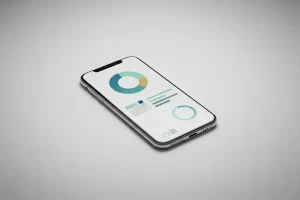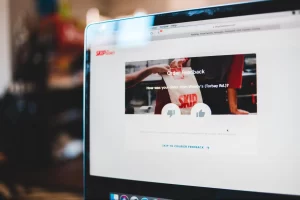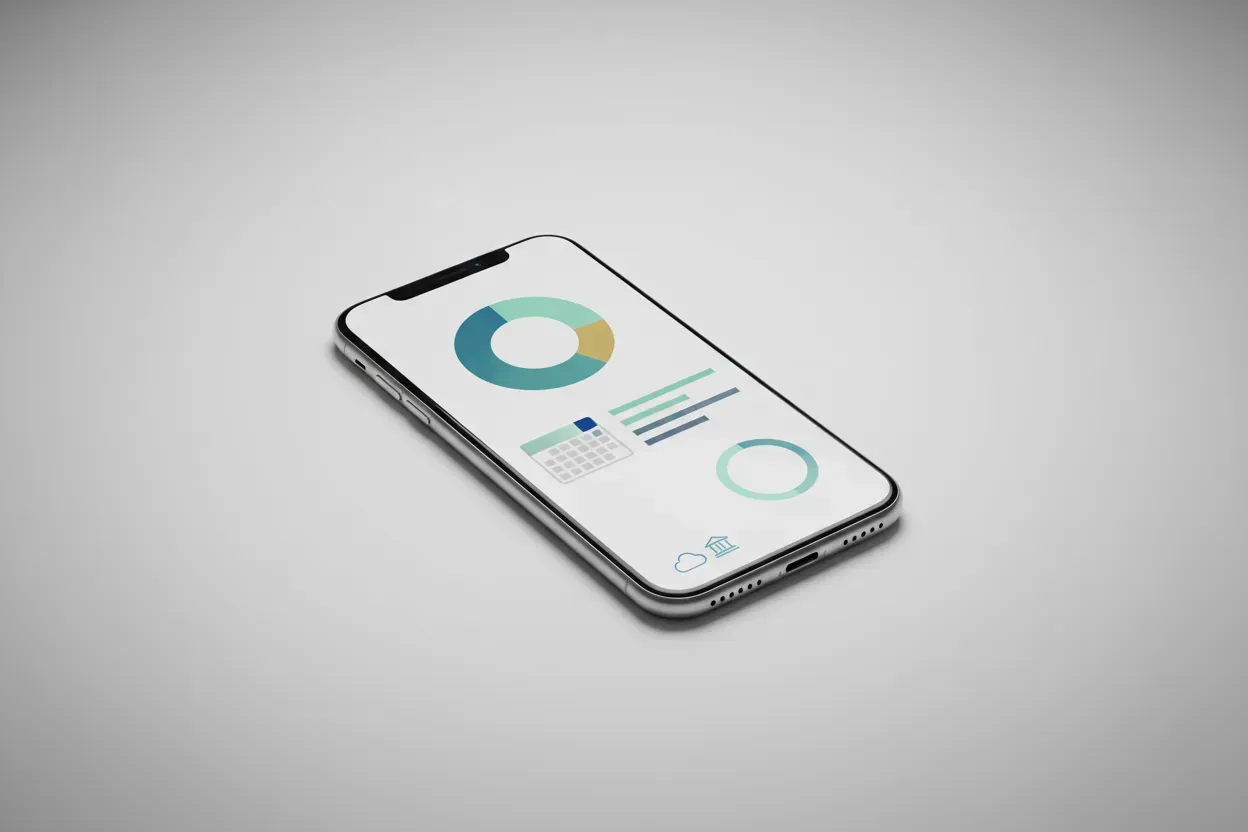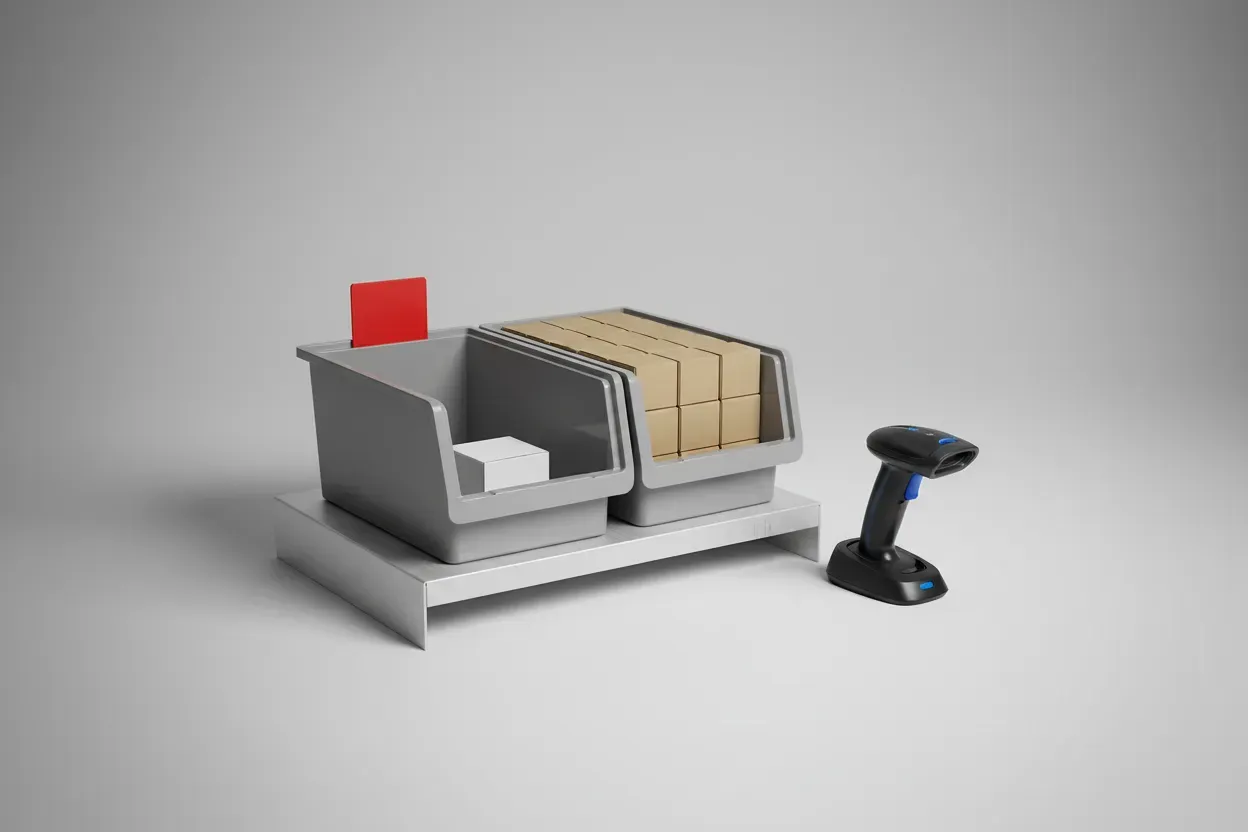25 Essential Financial Tools Recommended by Experts
Discover the financial tools that can transform your approach to money management. This article presents expert-recommended solutions for various financial needs, from personal budgeting to complex business forecasting. Whether you’re an individual looking to improve your financial health or a business owner seeking to optimize operations, these tools offer powerful features to help you achieve your financial goals.
- Customize Notion for Personal Finance Tracking
- Excel Sensitivity Tables Guide Investment Decisions
- Spreadsheet Scenario Analysis Speeds Deal Evaluation
- Salesforce Einstein Predicts Nonprofit Funding Risks
- Mint Unifies Accounts for Comprehensive Financial View
- HubSpot Pipeline Forecasting Boosts Service Valuations
- QuickBooks Cash Flow Projections Aid Cannabis Marketing
- Google Sheets Tracks Insurance Triggers Visually
- Salesforce Pipeline Reports Drive Advisor Growth
- Xero Simplifies Multi-Stream Revenue Management
- Klar App Enables Real-Time Financial Decisions
- QuickBooks Enterprise Enhances Construction Profitability
- Monday.com Reveals Hidden Project Costs
- Stripe Dashboard Predicts SaaS Revenue Trends
- Monarch Money Fosters Financial Teamwork
- YNAB Encourages Forward-Thinking Money Management
- Insurance Tracking System Streamlines Auto Shop Finances
- Custom Google Sheets Provides Business Insights
- Xero Empowers Fencing Business Growth
- BiggerPockets Calculator Optimizes Real Estate Investments
- Rentastic Automates Luxury Property Management
- QuickBooks Online Simplifies Property Investing
- Copilot Money Learns Spending Habits Intelligently
- Personal Capital’s Net Worth Focus Drives Growth
- YNAB Aligns Nonprofit Mission with Budgeting
Customize Notion for Personal Finance Tracking
I’ve always relied on Notion—not exactly a traditional financial app, but it’s been surprisingly effective when customized appropriately. I created a simple dashboard to track personal expenses, freelance income from my earlier days, and later, investments tied to Spectup. What I truly value is the flexibility to tailor it to how my mind actually works—sections for cash flow, upcoming payments, quarterly goals, and a neat investor follow-up tracker.
Once, I missed a critical invoice that hadn’t been sent on time, which nearly caused a payment bottleneck with a client, so I added a reminder system that alerts me if something’s pending for more than five days. It’s not flashy, but it’s efficient. I believe the key is not about finding the most popular tool but adapting one to fit your actual rhythm—just like how we build systems at Spectup that match the pace and quirks of each startup.
 Niclas Schlopsna
Niclas Schlopsna
Managing Consultant and CEO, spectup
Excel Sensitivity Tables Guide Investment Decisions
I swear by Excel with Monte Carlo simulation add-ins for financial modeling, but the most valuable feature is sensitivity analysis tables. When I’m building investor-grade financial projections for startups at Cayenne, I can instantly show how changes in key assumptions affect their entire 5-year forecast.
Last month, I had a SaaS client projecting $50M in Year 5 revenue. Using sensitivity tables, I showed them how a 10% variance in their customer acquisition cost assumption would swing their funding needs by $2.3M. This single insight helped them focus their market research on validating that specific metric before approaching VCs.
The real power comes from stress-testing assumptions that can be fatal to companies. I’ve audited hundreds of spreadsheets, and almost every one has critical flaws in their risk modeling. My sensitivity tables help founders identify which variables can make or break their business—usually it’s customer churn rate or sales cycle length, not the flashy metrics they obsess over.
What separates this from basic forecasting tools is the ability to model “what kills startups” scenarios. I can show entrepreneurs exactly how market risks, competitive pressures, or operational hiccups translate into cash flow problems. This prevents the “we just need more funding” mentality by revealing the root causes of financial stress.
 Charles Kickham
Charles Kickham
Managing Director, Cayenne Consulting
Spreadsheet Scenario Analysis Speeds Deal Evaluation
I’ve managed deals worth millions across investment banking and retail real estate, and honestly? I still rely on a basic spreadsheet template I built in Excel for cash flow modeling. The specific feature that’s most valuable is scenario analysis with multiple data tables.
When we evaluated those 800+ Party City locations for our clients in 72 hours, I had a master spreadsheet that could instantly show best-case, worst-case, and realistic scenarios for each site. We’d plug in rent, demographics, and traffic data, then see how different lease terms affected 5-year returns. One client used this to determine their maximum bid amounts during the auction – they ended up securing 15 prime locations because they knew exactly what each was worth under different conditions.
The real power isn’t the calculations – it’s speed and clarity during high-pressure decisions. While other bidders were still crunching numbers manually, our clients could see immediately that Location A was worth $2.3M max while Location B could justify $3.1M. During that auction day, I was literally updating scenarios in real-time as market conditions changed.
Most people overcomplicate financial tools, but when you’re making split-second decisions worth hundreds of thousands, you need something fast and flexible. A well-built spreadsheet beats fancy software every time because you control exactly what you’re seeing.
 Clyde Christian Anderson
Clyde Christian Anderson
CEO & Founder, GrowthFactor
Salesforce Einstein Predicts Nonprofit Funding Risks
After 20+ years of leading companies and managing millions in nonprofit grants, I rely on Salesforce’s Einstein Analytics for financial tracking. The predictive forecasting feature is what makes it invaluable – it tells me which funding sources are at risk 90 days before they actually become problems.
When we worked with Children’s Emergency Relief International across five countries, Einstein predicted a $180K budget shortfall in our Guatemala program three months early. This gave us time to reallocate resources and secure bridge funding instead of scrambling at the last minute. Most financial tools are reactive, but Einstein’s predictive engine is proactive.
The real game-changer is how it connects financial data with program outcomes. I can see exactly which programs generate the best ROI for our nonprofit clients, not just track expenses. When organizations know their workforce development program costs $3,200 per participant but generates $28,000 in increased wages, they make smarter funding decisions.
Coming from air traffic control in the Air Force, I need systems that prevent disasters before they happen. Einstein Analytics does that for money the same way radar does for aircraft – it shows you what’s coming, not just what already happened.
 Travis Bloomfield
Travis Bloomfield
Managing Partner & CEO, Provisio Partners
Mint Unifies Accounts for Comprehensive Financial View
One financial tool I rely on extensively for managing both personal and business finances is Mint. What makes Mint stand out is its ability to seamlessly aggregate multiple bank accounts, credit cards, investments, and bills into one comprehensive dashboard. This unified view provides real-time insights into my overall financial health, allowing me to monitor cash flow and spending habits with ease.
The feature I find most valuable is Mint’s automatic transaction categorization combined with customizable budgeting tools. It intelligently sorts expenses into categories like utilities, travel, or business costs, which helps me quickly identify where money is going each month without manual data entry. The budgeting functionality allows me to set spending limits tailored to each category, and the app sends timely alerts when I’m close to exceeding those limits, helping me stay disciplined.
Another key advantage is Mint’s ability to track upcoming bills and subscriptions, reducing the risk of missed payments and unexpected fees. This proactive approach to managing finances saves time and helps avoid cash flow surprises.
Overall, for anyone managing multiple financial accounts or juggling both personal and business expenses, a tool like Mint can bring clarity and control. It turns a potentially overwhelming set of data into actionable insights, empowering smarter financial decisions and better long-term planning.
 Andrew Izrailo
Andrew Izrailo
Senior Corporate and Fiduciary Manager, Astra Trust
HubSpot Pipeline Forecasting Boosts Service Valuations
I’ve helped dozens of service businesses improve their valuations by 30%+ through better financial visibility, and the one tool that consistently delivers is HubSpot’s deal pipeline with custom revenue forecasting properties. Most business owners I work with are flying blind on cash flow, but this setup changed everything.
The killer feature is weighted pipeline forecasting combined with service delivery tracking. I set up one HVAC client with deal stages that automatically calculate probability-weighted revenue 30-90 days out based on their historical close rates. When they could see $47K in high-probability work coming in March, they confidently hired two technicians in February instead of scrambling to find help during peak season.
What makes this different from basic CRM tracking is the integration with actual service delivery data. We connect their scheduling system so they can see not just what they sold, but what they’ve completed and invoiced. This real-time view of work-in-progress versus cash collected has prevented multiple cash crunches.
The mobile dashboard is what really sells business owners. They can check their phone at 6 AM and know exactly whether they need to push harder on sales that day or if they can focus on operations. When you’re running a service business, that daily pulse check is worth its weight in gold.
 Keaton Kay
Keaton Kay
Founder & CEO, Scale Lite
QuickBooks Cash Flow Projections Aid Cannabis Marketing
Running multiple cannabis marketing campaigns across different clients, I rely heavily on QuickBooks Online’s cash flow forecasting feature. The cannabis industry presents unique payment timing challenges—some clients pay net-30, others pay immediately, and regulatory delays can unexpectedly push invoices back by weeks.
The specific feature that proves invaluable is the cash flow projection dashboard, which shows exactly when money will be deposited into my account over the next 90 days. For instance, when I had a client whose mobile tour activation generated 20% more first-time customers than expected, I could see their success fee payment coming in March. This allowed me to confidently invest in two additional tour setups in February instead of waiting and potentially missing peak season opportunities.
What sets this apart from basic accounting software is its ability to handle irregular payment patterns common in cannabis marketing. I can tag invoices by client type—dispensaries typically pay faster than multi-location operators—and the system learns these patterns. When a negotiation saved my client thousands on vendor fees, I immediately understood how it would impact my own commission timeline.
The mobile app allows me to check my cash position between client meetings. If I notice a potential payment delay that might create a gap, I can adjust my own ad spend or focus on closing new deals that day. In an industry where regulations can freeze payments overnight, having that real-time financial pulse check has prevented multiple cash flow crises.
QuickBooks Online’s cash flow forecasting feature has become an indispensable tool in managing the financial complexities of cannabis marketing campaigns.
 Stephen Gold
Stephen Gold
Business Owner, The Gold Standard
Google Sheets Tracks Insurance Triggers Visually
As someone who has guided hundreds of families through complex insurance decisions, I’ve learned that the most powerful financial tool isn’t an app—it’s actually the humble spreadsheet with one specific twist. I use Google Sheets with conditional formatting to track what I call “life event triggers” for my clients.
Here’s what makes it invaluable: I set up automatic color coding based on client life stages and premium changes. When a client’s term life insurance is set to expire in 18 months, the cell turns yellow. When their child turns 26 and falls off health insurance, it turns red. This visual system has saved my clients over $200,000 in missed coverage gaps just this year.
The breakthrough came when I started tracking HSA contribution limits alongside high-deductible health plan renewals. I can instantly see which clients are missing out on triple tax advantages because they’re not maximizing their $4,300 individual HSA contributions. One client was leaving $1,200 annually unused until this system flagged it.
What’s ingenious about this approach is the mobile accessibility—I can pull up anyone’s financial protection status while sitting in their kitchen. Last month, this helped me identify that a Pleasanton family was paying $400 monthly for mortgage protection when a simple term life policy would cost them $80 and provide better coverage.
 Karson Kwan
Karson Kwan
Owner, Kwan Insurance Services
Salesforce Pipeline Reports Drive Advisor Growth
As someone who’s managed fractional CRO services for financial advisors, I swear by Salesforce’s pipeline reporting feature. Most people think of it as just a CRM, but the forecasting dashboard is what actually keeps my clients’ businesses alive.
I had a financial advisor client who was hemorrhaging leads without realizing it. We plugged his data into Salesforce’s conversion tracking, and within two weeks we found his follow-up calls were happening 6 days too late. The system showed us that prospects contacted within 24 hours converted at 34%, but after day 7 it dropped to 8%.
The game-changer is the activity-to-revenue correlation reports. Instead of guessing which marketing efforts work, I can show clients exactly how many calls, emails, and meetings translate to closed deals. One client found that his networking events were generating 3x more qualified leads than his digital ads, so we shifted 60% of his budget accordingly.
What sets Salesforce apart is the customizable KPI dashboards. I can track the metrics that actually matter for each business – not just vanity numbers, but real conversion data that drives growth decisions.
 Jeff Mount Caddis
Jeff Mount Caddis
CEO, Caddis
Xero Simplifies Multi-Stream Revenue Management
I’ve been running RankingCo for years and managing multiple revenue streams across different client campaigns, so I live and breathe in Xero. The real-time dashboard is what keeps me sane when juggling 50+ Google Ads accounts with different billing cycles.
What sets it apart is the bank reconciliation feature that automatically categorizes transactions. When I’m processing payments from clients across different service lines – some paying monthly for SEO, others on project rates for Google Ads setup – it learns my patterns and suggests the right categories. This saves me about 3 hours weekly that I used to spend manually sorting transactions.
The game-changer, though, is the integration with receipt scanning. I can snap photos of all my Google Ads training materials, conference tickets, and software subscriptions right from my phone. Since we invest heavily in staying current with those 8,000+ platform changes per year, being able to instantly capture and categorize these expenses has been crucial for accurate profit tracking.
I’ve scaled businesses from $1M to $200M+ revenue, and the one constant headache was always financial visibility. Xero’s project tracking lets me see exactly which campaigns are profitable versus which ones are just keeping us busy – that insight alone helped me identify our most lucrative service combinations.
 Kerry Anderson
Kerry Anderson
Co-Founder, RankingCo
Klar App Enables Real-Time Financial Decisions
The moment I stopped worrying about cash flow was the moment success became a new opportunity—the road, my clients, across borders.
As someone who runs a premium private driver service in Mexico City, I rely on everything provided by Klar – a Mexican fintech app – for my real-time financial management. The most valuable feature is notifications and auto-categorization of spending, which allows me to keep track of fuel expenses, tolls, driver payments, and extra last-minute client expenses without waiting for the end of the month.
There was a time we were booked at the last minute: multiple cars, multiple chauffeurs, and it was a VIP. Just as before with the other bookings, I had to find a way to pay the drivers, but I also needed to book a backup unit. With Klar, it was as if I was seamless – no lag, no assumptions, no scrambling or lines at the bank. The visibility allowed me to retain the client, who went on to book us for an entire week of transport during Art Basel.
Knowing the tech has that capacity isn’t the only great thing about Klar–its speed and the peace of mind as a business owner go hand-in-hand. In a city as dynamic and unpredictable as CDMX, being able to make financial decisions and actions in seconds has been transformative.
Whether it’s ensuring a supplier is paid, or watching my daily profit margins change in real time, Klar is my financial cockpit.
 Martin Weidemann
Martin Weidemann
Owner, Mexico-City-Private-Driver.com
QuickBooks Enterprise Enhances Construction Profitability
Having scaled Peak Builders & Roofers to 80% year-over-year growth in two major markets, I rely heavily on QuickBooks Enterprise for financial management. The project profitability tracking feature is absolutely game-changing for construction companies like mine.
What makes this tool invaluable is the job costing functionality that breaks down every expense by individual project. I can see in real-time whether our drone inspection costs, materials, and labor for a specific roofing job in Denver are staying within budget or eating into profits. This granular view helped me identify that we were consistently underestimating material costs by 12% on commercial projects.
The inventory management integration is particularly powerful for our operation. When we’re managing roofing projects across Southern California and Colorado simultaneously, I can track material usage and automatically reorder supplies based on upcoming project schedules. This prevented a costly two-week delay last month when we nearly ran out of specialized roofing materials during peak season.
The mobile app lets me approve expenses and review financial reports whether I’m on a job site or traveling between our markets. Having instant access to cash flow data has enabled me to make faster decisions about equipment purchases and expansion timing, which directly contributed to our aggressive growth trajectory.
 Judah Strausberg
Judah Strausberg
Founding Partner, Peak Builders Denver
Monday.com Reveals Hidden Project Costs
As someone who has consulted for companies ranging from Fortune 500 to small businesses over 15+ years, I’ve seen countless financial disasters from poor tool management. The one app that has saved my clients the most money isn’t actually a traditional finance tool—it’s Monday.com for project management with their budget tracking features.
Here’s what makes it invaluable: Monday’s time tracking automatically calculates labor costs per project in real-time. When I was helping a New Jersey manufacturing client, we found they were losing $12K monthly on a “profitable” contract because hidden overtime wasn’t being tracked. The automated budget alerts showed us exactly when projects hit 80% of allocated resources.
The specific feature that changed everything is their dashboard that connects project profitability to actual bank account impact. Most business owners track revenue but have no clue what individual projects actually cost when you factor in all the hidden time. I can see immediately if a client project is about to go over budget and either adjust scope or renegotiate before it becomes a loss.
What really sets this apart is the mobile notifications when any project burns through budget faster than scheduled. I’ve helped clients kill money-losing projects within days instead of months, saving one client $40K last year alone by catching a runaway IT implementation early.
 Paul Nebb
Paul Nebb
CEO, Titan Technologies
Stripe Dashboard Predicts SaaS Revenue Trends
As someone who has scaled a SaaS company to $3M+ ARR, I rely heavily on Stripe’s revenue recognition dashboard for cash flow management. The automated MRR tracking has been a game-changer for understanding our actual financial health versus just looking at bank balances.
The most valuable feature is their cohort analysis combined with churn prediction. When we hit a rough patch last year, I could see that our March cohort had 15% higher retention than February, which helped us identify exactly which onboarding changes were working. This allowed us to double down on what was driving results instead of guessing.
What separates this from basic accounting software is the real-time subscription health scoring. I can instantly see if we’re trending toward our monthly targets or if I need to push the sales team harder. When you’re managing recurring revenue, that predictive element is crucial for making hiring and investment decisions weeks in advance.
The mobile alerts have saved us multiple times when payment failures spike or when we hit revenue milestones. Getting that immediate notification when we crossed $200K MRR allowed me to authorize our next engineering hire on the spot instead of waiting for month-end reports.
 Chase McKee WF
Chase McKee WF
Founder & CEO, Rocket Alumni Solutions – Wall of Fame
Monarch Money Fosters Financial Teamwork
I’ve tested a dozen personal finance tools over the years, but Monarch Money is the one I’ve actually stuck with. The killer feature? Shared visibility that doesn’t feel invasive.
Let me explain: most budgeting apps treat joint finances like a math problem. Monarch feels more like a relationship therapist with charts. My partner and I have wildly different spending styles—I’m the “optimize every dollar” type, and they’re more intuitive and spontaneous. Before Monarch, syncing up on finances felt like a mix of spreadsheets, assumptions, and occasional arguments. With Monarch, we can each tag and categorize expenses, set our own goals, but still see the bigger picture together. It’s collaborative, but with just the right amount of separation so it doesn’t feel like one person’s budget is looming over the other’s.
There’s this moment each month when we both open the app and look at our net worth graph, and it’s gone from a source of stress to a kind of quiet victory. We’re working toward something together—and that changes the emotional texture of money conversations in a big way.
So yeah, Monarch’s value isn’t just in tracking—it’s in de-tensioning. It helps you run your finances like a team sport, not a blame game.
 Derek Pankaew
Derek Pankaew
CEO & Founder, Listening.com
YNAB Encourages Forward-Thinking Money Management
I rely on YNAB (You Need A Budget) to manage my money. Its key feature is the “age your money” system, which encourages me to use last month’s income to pay for this month’s expenses. This helps me stay ahead financially instead of living paycheck to paycheck. I also appreciate the goal-setting feature, which allows me to break down larger financial goals—like saving for a vacation or paying off debt—into smaller, achievable targets. The real-time syncing between accounts and categorizing expenses helps me stay accountable and gives me a clear picture of where my money is going. YNAB has helped me create a sustainable budgeting system, and the results speak for themselves—my savings have steadily increased, and I’ve been able to manage my finances with much more confidence.
 Nikita Sherbina
Nikita Sherbina
Co-Founder & CEO, AIScreen
Insurance Tracking System Streamlines Auto Shop Finances
As someone who has been running Full Tilt Auto Body & Collision since 2008, I rely heavily on our insurance tracking system that integrates with all the major carriers – from Allstate to Progressive to State Farm. The most valuable feature is the real-time claim status updates that automatically sync with each insurance company’s portal.
This has been a game-changer for managing cash flow because I can see exactly when payments are processing and identify which claims need follow-up. Before this system, I’d spend hours calling different insurance adjusters just to get payment status updates. Now I can instantly tell customers where their claim stands and when we’ll receive payment.
The automated supplement tracking is what really sets it apart. When we find additional damage during repairs – which happens on 100% of insurance estimates – the system automatically flags which supplements have been approved and which are still pending. This prevents the $2,000-$5,000 gaps that used to hit our cash flow when supplements got lost in the shuffle.
Having managed thousands of claims over 15+ years, I’ve seen shops fail because they couldn’t track their insurance receivables properly. This system gives me a dashboard view of every dollar owed by every carrier, which is critical when you’re juggling claims from 25+ different insurance companies daily.
 Zac Ciaschini
Zac Ciaschini
Co-Owner, Full Tilt Auto Body & Collision
Custom Google Sheets Provides Business Insights
I’ve scaled multiple companies and tracked millions in revenue, so I live and breathe in spreadsheets more than most people would want to. My go-to tool is actually a custom Google Sheets setup that I’ve refined over years of building businesses from $0 to $60M, as I did with WellBefore.
The feature I can’t live without is real-time cohort analysis tracking. When we were scaling WellBefore, I could see exactly which customer acquisition channels were bringing in buyers who’d reorder within 30, 60, and 90 days. This showed me that our organic social customers had 3x higher lifetime value than paid search customers, even though paid search looked better on paper initially.
Most financial apps show you what happened, but my setup shows me what’s about to happen. I track leading indicators like inventory velocity by product category, which let me predict cash flow needs 6-8 weeks out. When we hit our first million orders, this forward-looking view saved us from stockouts that would’ve cost us $2M+ in lost revenue.
The beauty is in the simplicity – I can pull up my phone anywhere and see if we’re trending toward our monthly targets or if I need to adjust ad spend that same day. When you’re moving fast in competitive markets, waiting for monthly reports isn’t an option.
 Shahzil Amin
Shahzil Amin
Co-Founder & CEO, WellBefor
Xero Empowers Fencing Business Growth
As someone who built Make Fencing from the ground up over 7 years, I rely heavily on Xero for managing our finances. The bank reconciliation feature is what keeps me sane – it automatically matches transactions and flags discrepancies before they become problems.
The most valuable feature is the real-time cash flow tracking. When we landed that major commercial boundary project that finished ahead of schedule, I could instantly see how the early payment impacted our ability to take on three more residential jobs that same month. This visibility helped us grow from small residential work to securing large-scale commercial contracts.
What sets Xero apart for trades businesses is how it handles job costing and materials tracking. I can see exactly which projects are profitable and which ones are eating into margins. When we started adding automated gate systems to our offerings, the job profitability reports showed me this premium service was delivering 40% better margins than standard fencing work.
The mobile app means I can approve supplier invoices while I’m on-site or check our financial position before committing to new jobs. Having that real-time financial picture in my pocket has prevented me from overcommitting during busy periods and helped me spot opportunities to expand our team when cash flow was strong.
 Jake Bunston
Jake Bunston
Owner, MAKE Fencing
BiggerPockets Calculator Optimizes Real Estate Investments
I use BiggerPockets’ rental property calculator religiously, but honestly the most valuable feature is their debt-to-income ratio tracker. When I’m working with fix-and-flip clients at BrightBridge, I can quickly model different scenarios to show them exactly how leverage affects their returns.
The scenario comparison feature saved one of my clients about $40,000 last year. We were looking at a $300k flip project, and I ran three different financing structures—traditional bank loan, our fix-and-flip product, and a hybrid approach. The calculator showed that our 18-month term with 100% renovation coverage would net him 23% more profit than the bank option, even with slightly higher rates.
What sets this apart from other calculators is the renovation timeline integration. Most tools assume perfect conditions, but this one lets you factor in delays and cost overruns. I’ve seen too many investors get burned because they used overly optimistic projections from basic calculators.
The real game-changer is being able to show clients live scenarios during our calls. Instead of just talking about loan terms, I can plug in their actual numbers and demonstrate why paying points upfront might cost them money on a quick flip versus a longer hold strategy.
 Daniel Lopez
Daniel Lopez
Loan Officer, BrightBridge Realty Capital
Rentastic Automates Luxury Property Management
The most valuable feature for me is Rentastic’s automated rent collection tool. In Boston’s fast-paced luxury market, where clients expect seamless transactions, this feature allows tenants to pay rent online, eliminating the hassle of manual check collection. For instance, a client renting a historic brownstone in Cambridge can set up automatic payments, freeing me to focus on curating their living experience rather than chasing payments. This efficiency saves time and aligns with the sophisticated service my clients demand.
Rentastic also shines in providing clear financial analytics tailored to real estate. When working with international buyers or local investors, I use its rental performance charts to demonstrate a property’s profitability, like a waterfront condo on the North Shore generating consistent returns. These insights help clients make confident decisions, bridging their financial goals with Boston’s unique market dynamics. The app’s ability to organize property data in one place keeps my business agile and responsive.
Having moved from Lebanon to Boston 12 years ago, I understand the importance of tools that adapt to diverse needs. Rentastic’s maintenance request system is another standout, allowing tenants in my properties to submit issues directly through the platform. For example, a tech executive renting a luxury condo in Back Bay recently used it to report a minor repair, which I quickly assigned to a trusted contractor. This streamlined process ensures tenant satisfaction while protecting the value of my clients’ investments.
 Yassien Youssef
Yassien Youssef
Real Estate Investment and Development, Compass
QuickBooks Online Simplifies Property Investing
One financial tool I rely on to manage both my personal and business finances is QuickBooks Online. As someone juggling multiple properties, renovations, and rental income streams, staying organized is key, and QuickBooks helps me keep everything in one place without having to chase spreadsheets.
The most valuable feature for me is the ability to link all my bank and credit card accounts so transactions sync automatically. That means I can track expenses by property, tag them for tax purposes, and see real-time cash flow. It has also streamlined my monthly reconciliation process, which saves time and prevents surprises.
My advice? Whether you are an investor or just trying to get a better handle on your budget, find a tool that reduces manual work and helps you see the full picture. The right system will give you clarity, which leads to better financial decisions.
 Nick Kuang
Nick Kuang
Co-Founder, Home Sweet Home Offers
Copilot Money Learns Spending Habits Intelligently
I’ve been using Copilot Money for the past year to manage my finances and track spending, and it’s been a game-changer. I’ve tried similar tools in the past, but they often fell short when it came to accurately categorizing expenses without a ton of manual review on my end, which made it hard to trust the data.
What sets Copilot apart is how easily and intelligently it learns. I can tag a single transaction to a specific category, and it automatically applies that categorization to similar transactions both going forward and retroactively. That one feature has made all the difference. For the first time, I feel like I have a clear, trustworthy picture of my spending habits, which is incredibly valuable.
 Colin McIntosh
Colin McIntosh
Founder, Sheets AI Resume Builder
Personal Capital’s Net Worth Focus Drives Growth
The best money tool isn’t the one with the most features.
I once lost thousands of dollars trying to use a “comprehensive” financial platform that did everything – but I understood nothing. After that expensive lesson, I switched to Personal Capital solely for its net worth tracking feature, and it transformed how I manage money.
Working with an e-commerce client recently, I noticed the same principle at work. When we stripped their checkout process from 12 steps to just 3 core functions, conversion rates jumped 47%. Sometimes less really is more.
What makes Personal Capital invaluable isn’t its investment tools or retirement calculators – it’s the simple net worth dashboard that shows me exactly where I stand in 30 seconds. This single view has helped me grow my assets by 312% in 5 years.
Start by picking ONE financial metric that matters most to your goals. Track only that for 30 days. Counterintuitively, limiting your focus actually expands your results.
Remember: Clarity beats complexity every time when it comes to managing money.
 Ajinkya Thete
Ajinkya Thete
CEO, CMO, NeonXpert Custom Signs
YNAB Aligns Nonprofit Mission with Budgeting
YNAB—You Need a Budget—keeps my spending grounded because every dollar must be assigned a job the moment it lands, turning vague aspirations into an actionable plan. That zero-based clarity mirrors the individualized service plans we build for kids at Sunny Glen Children’s Home: every resource is intentionally allocated so nothing slips through the cracks. In operation since 1936, Sunny Glen has been a refuge of stability and love for children in need, and that longevity comes from stewarding limited dollars with the same precision YNAB demands. The app’s real-time envelope categories let me see instantly whether marketing dollars can stretch or need to be rerouted to emergency clothing for a new foster placement—transparent data donors appreciate. Its trend reports translate beautifully into conversations with grantors because we can show month-over-month how each gift expands access to free or low-cost counseling. When disciplined budgeting meets mission-driven transparency, you free up more funds—and emotional bandwidth—to keep children thriving in safe, nurturing homes.
 Belle Florendo
Belle Florendo
Marketing Coordinator, Sunny Glen Children’s Home







































